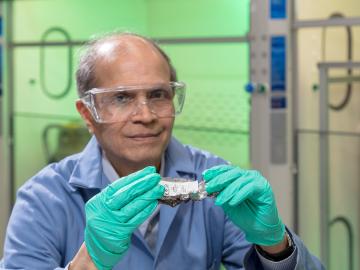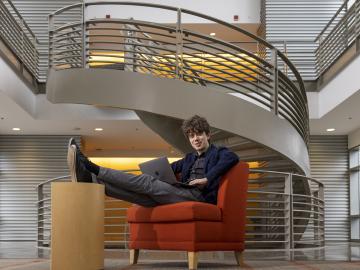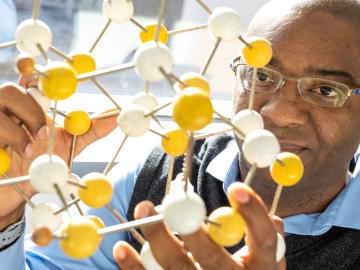
Filter News
Area of Research
- (-) Fusion Energy (5)
- (-) Materials (50)
- Advanced Manufacturing (4)
- Biology and Environment (17)
- Clean Energy (69)
- Climate and Environmental Systems (2)
- Computer Science (2)
- Energy Sciences (1)
- Fusion and Fission (5)
- Isotopes (4)
- Materials for Computing (5)
- National Security (12)
- Neutron Science (27)
- Nuclear Science and Technology (22)
- Nuclear Systems Modeling, Simulation and Validation (2)
- Quantum information Science (3)
- Supercomputing (38)
News Topics
- 3-D Printing/Advanced Manufacturing (4)
- Advanced Reactors (4)
- Artificial Intelligence (2)
- Big Data (2)
- Bioenergy (3)
- Biomedical (1)
- Chemical Sciences (2)
- Climate Change (1)
- Computer Science (10)
- Coronavirus (1)
- Critical Materials (2)
- Cybersecurity (1)
- Energy Storage (8)
- Environment (3)
- Exascale Computing (1)
- Frontier (1)
- Fusion (4)
- Isotopes (1)
- Machine Learning (3)
- Materials (1)
- Materials Science (30)
- Mathematics (1)
- Microscopy (5)
- Molten Salt (1)
- Nanotechnology (12)
- National Security (1)
- Neutron Science (10)
- Nuclear Energy (6)
- Physics (8)
- Polymers (4)
- Quantum Science (4)
- Security (1)
- Summit (3)
- Sustainable Energy (6)
- Transformational Challenge Reactor (2)
- Transportation (3)
Media Contacts

Three technologies and one commercialization program developed at the Department of Energy’s Oak Ridge National Laboratory have won National Technology Transfer Awards from the Federal Laboratory Consortium.

Joe Paddison, a Eugene P. Wigner Fellow at the Department of Energy’s Oak Ridge National Laboratory, believes there’s more information to be found in neutron scattering data than scientists like himself might expect.

OAK RIDGE, Tenn., Feb. 27, 2020 — Researchers at Oak Ridge National Laboratory and the University of Tennessee achieved a rare look at the inner workings of polymer self-assembly at an oil-water interface to advance materials for neuromorphic computing and bio-inspired technologies.

Valentino (“Tino”) Cooper of the Department of Energy’s Oak Ridge National Laboratory uses theory, modeling and computation to improve fundamental understanding of advanced materials for next-generation energy and information technologies.

OAK RIDGE, Tenn., Feb. 12, 2020 -- Michael Brady, a researcher at the Department of Energy’s Oak Ridge National Laboratory, has been named fellow of the National Association of Corrosion Engineers, or NACE International.

The prospect of simulating a fusion plasma is a step closer to reality thanks to a new computational tool developed by scientists in fusion physics, computer science and mathematics at ORNL.

Energy storage startup SPARKZ Inc. has exclusively licensed five battery technologies from the Department of Energy’s Oak Ridge National Laboratory designed to eliminate cobalt metal in lithium-ion batteries. The advancement is aimed at accelerating the production of electric vehicles and energy storage solutions for the power grid.

An international team of researchers has discovered the hydrogen atoms in a metal hydride material are much more tightly spaced than had been predicted for decades — a feature that could possibly facilitate superconductivity at or near room temperature and pressure.

The formation of lithium dendrites is still a mystery, but materials engineers study the conditions that enable dendrites and how to stop them.

Rigoberto “Gobet” Advincula has been named Governor’s Chair of Advanced and Nanostructured Materials at Oak Ridge National Laboratory and the University of Tennessee.


